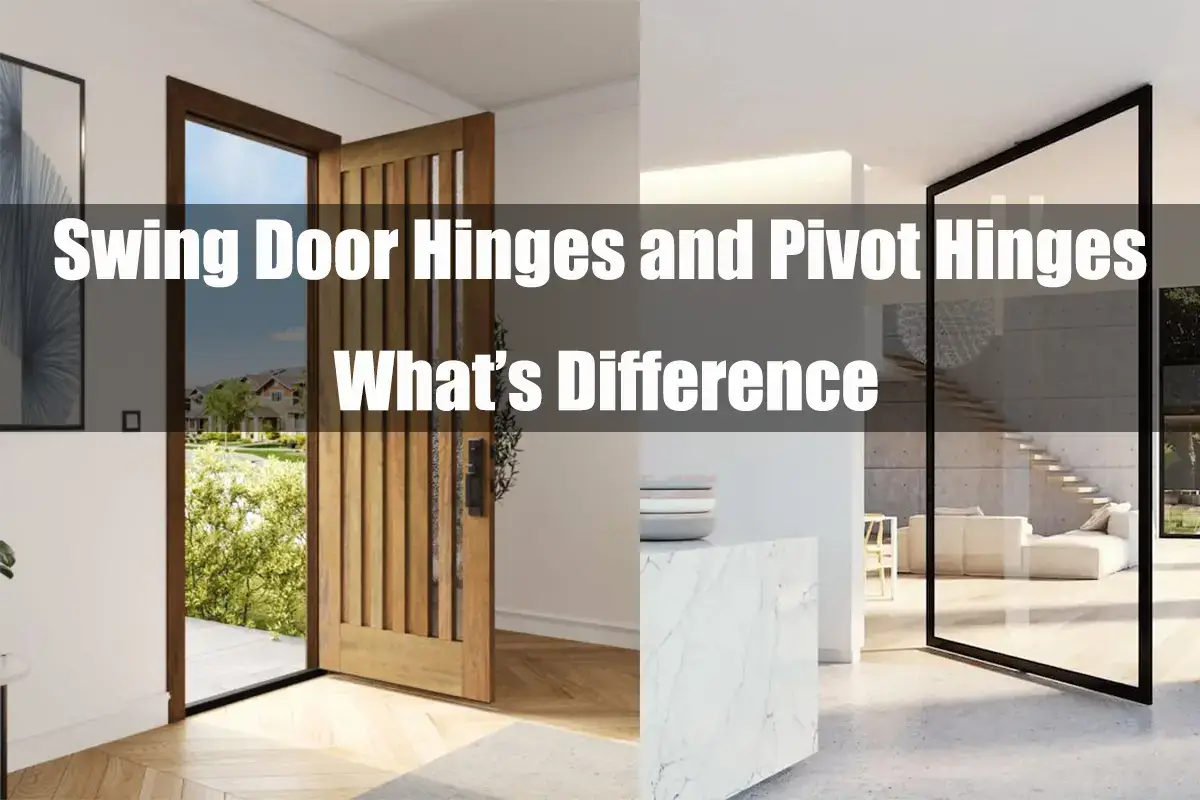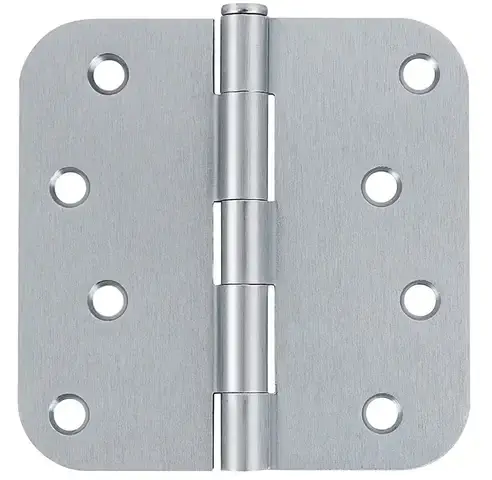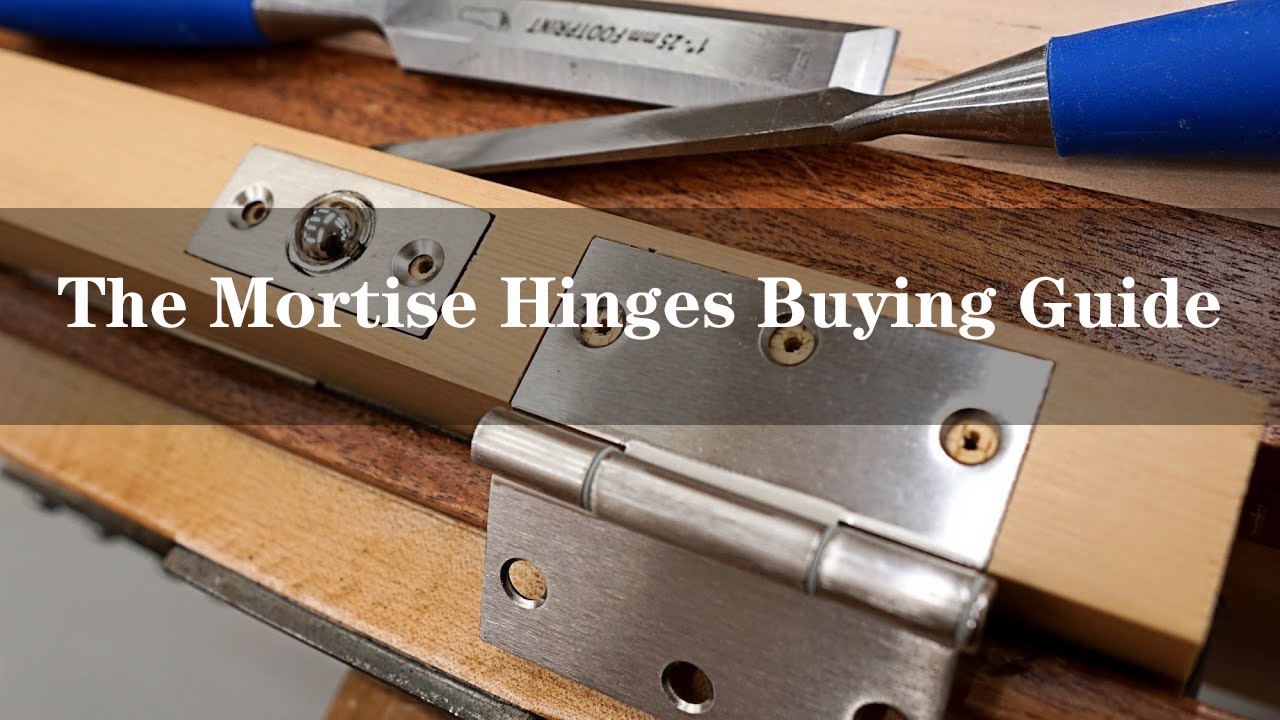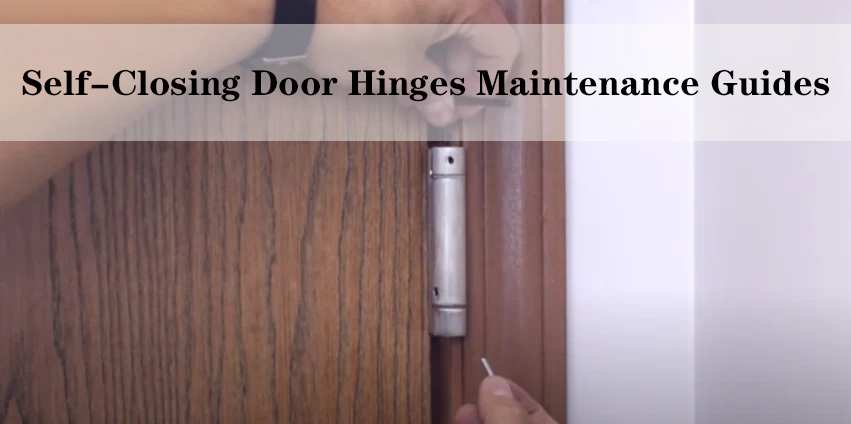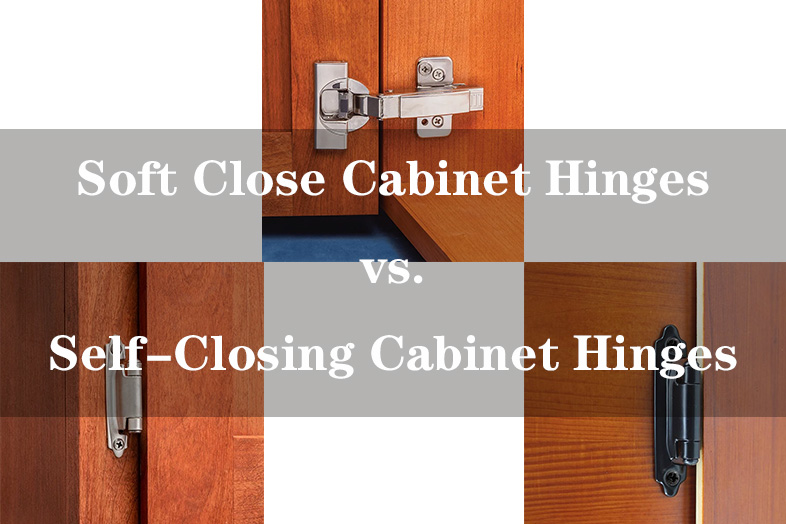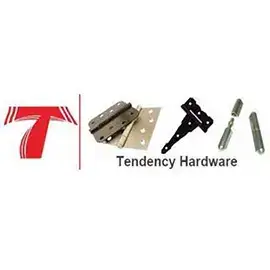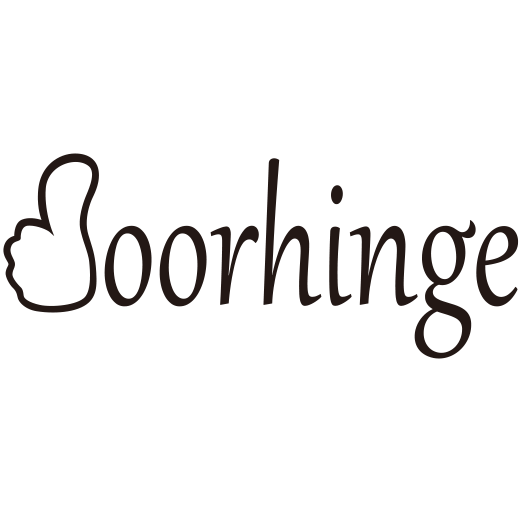Hinges might not be the first thing that comes to mind when you think about doors, but they play a crucial role in their functionality. Among the various types of hinges, swing door hinges and pivot hinges stand out. While they might appear similar at first glance, they each have distinct characteristics that cater to different needs. In this article, we’ll delve into the differences between swing door hinges and pivot hinges, helping you make an informed decision when it comes to choosing the right hinge for your doors.
Swing Door Hinges
Swing door hinges are your everyday, run-of-the-mill hinges. They’re like the unsung heroes of doors, allowing them to swing open and closed. These hinges are most commonly seen on interior and exterior doors.
1. Types of Swing Door Hinges
Butt Hinges: These are the most common and traditional type of swing door hinges. They consist of two plates, one attached to the door frame and the other to the door itself. The two plates are connected by a pin, allowing the door to swing open and closed. Butt hinges are versatile and can be used for doors that need to swing in both directions.
Continuous Hinges (Piano Hinges): Continuous hinges, also known as piano hinges, are a long continuous strip of metal that runs the entire length of the door. They provide consistent support and distribute the door’s weight evenly along the hinge side. These hinges are often used for heavy doors, cabinet lids, and other applications where durability is crucial.
Ball Bearing Hinges: Ball bearing hinges are designed for smoother door movement. They contain ball bearings in between the hinge knuckles, which reduce friction and allow the door to swing more smoothly. These hinges are suitable for heavier doors and high-traffic areas.
Spring Hinges: Spring hinges have a built-in spring mechanism that automatically closes the door after it’s been opened. They’re commonly used in commercial settings where doors need to self-close for safety or energy efficiency reasons.
Security Hinges: Security hinges are designed with anti-tamper features to prevent the removal of hinge pins from the outside. They provide an extra layer of security for outward-swinging doors.
Double Acting Hinges (Saloon Hinges): These hinges allow the door to swing in both directions. They’re often used for doors in restaurants, kitchens, or any space where hands might be full and pushing the door open in either direction is desired.
2. Features of Swing Door Hinges
Smooth Operation: Swing door hinges are designed to provide seamless and fluid door movement. Whether you’re opening or closing the door, these hinges ensure a smooth and effortless operation.
Two-Way Swing: One of the primary advantages of swing door hinges is their ability to allow doors to swing in both directions. This feature is particularly beneficial for doors in high-traffic areas or those that require easy access from either side.
Sturdiness: Swing door hinges are engineered to be robust and capable of handling the weight of typical doors. This sturdiness ensures the longevity of both the hinges and the doors they support.
Versatility: These hinges are adaptable to various door materials and sizes. Whether you have a lightweight interior door or a heavier exterior door, swing door hinges can be selected to match your specific requirements.
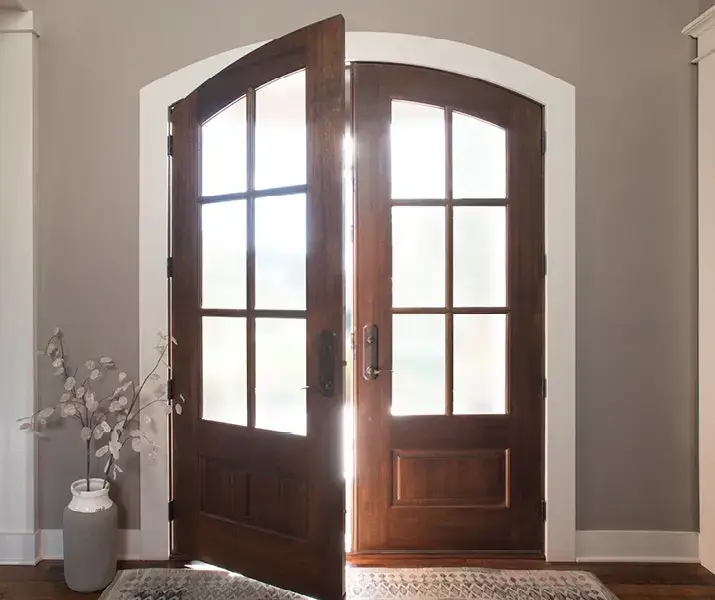
Easy Installation: Swing door hinges are relatively simple to install, making them accessible to both professionals and DIY enthusiasts. The installation process typically involves securing the hinge plates to the door and frame, followed by attaching the hinge pin.
Design Variety: Swing door hinges come in a range of designs and finishes, allowing you to select hinges that complement the overall aesthetics of your doors and interior design.
Cost-Effectiveness: Compared to some specialized hinges, swing door hinges offer an economical choice without compromising on functionality. They provide reliable performance at a reasonable cost.
Pivot Hinges
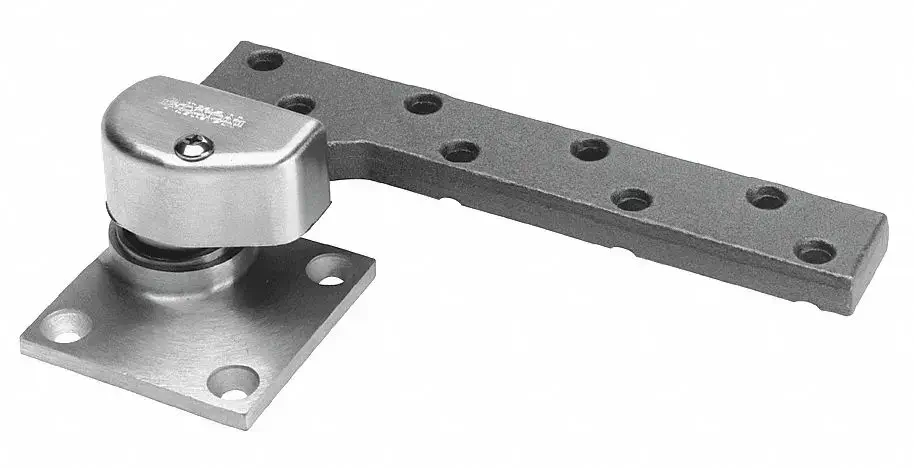
Pivot hinges are the cool cats of the hinge world. Unlike swing door hinges, they don’t rely on a traditional pin setup. Instead, they rotate on a single point at the top and bottom of the door.
1. Types of Pivot Hinges
Center-Hung Pivot Hinges: These hinges are attached at the center point of the door, both at the top and bottom. They provide balanced and smooth pivoting motion, making them suitable for heavy doors. Center-hung pivot hinges are often used for entry doors and doors with a substantial weight.
Offset Pivot Hinges: Offset pivot hinges are installed slightly away from the centerline of the door. This design helps distribute the door’s weight more evenly, reducing strain on the frame and floor. These hinges are particularly useful for heavy doors and doors with high traffic.
Intermediate Pivot Hinges: These hinges are often used in conjunction with center-hung pivot hinges to provide extra support for taller doors. They are placed between the top and bottom hinges, contributing to the door’s stability and preventing sagging over time.
Concealed Pivot Hinges: As the name suggests, concealed pivot hinges are hidden from view when the door is closed. They offer a sleek and minimalist appearance, making them a popular choice for modern interior designs. These hinges can be center-hung or offset, depending on the specific design requirements.
Floor Pivot Hinges: Instead of attaching to the door itself, floor pivot hinges are installed on the floor and provide a pivot point for the door. This type of hinge is commonly used for doors that have no visible hinges and require a clean and unobstructed appearance.
Top and Bottom Pivot Hinges: These hinges consist of a pivot at both the top and bottom of the door. They allow the door to pivot around a central axis, providing a unique and aesthetically pleasing movement. Top and bottom pivot hinges are often used for doors with distinct design elements.
Continuous Pivot Hinges: Similar to continuous hinges used with standard swing doors, continuous pivot hinges run the full length of the door. They provide consistent support and distribute the door’s weight evenly, making them suitable for taller and heavier doors.
2. Features of Pivot Hinges
Sleek Aesthetics: Pivot hinges are designed for a clean and unobtrusive appearance. Unlike traditional hinges with visible pins and plates, pivot hinges often remain hidden within the door and frame, contributing to a streamlined and elegant look.
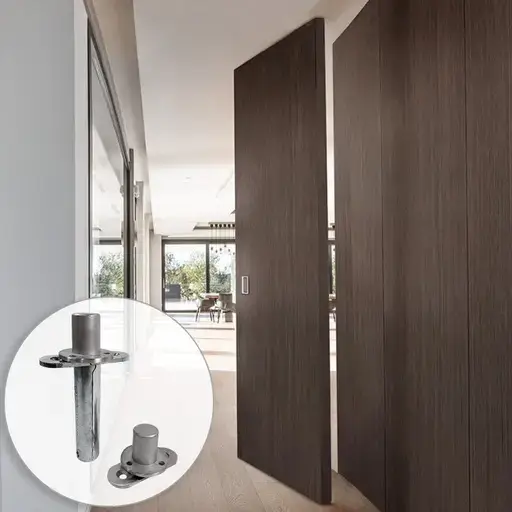
360-Degree Rotation: One of the key features of pivot hinges is their ability to provide a full 360-degree rotation for the door. This unique rotational movement allows the door to swing in both directions effortlessly, enhancing accessibility and convenience.
Weight Distribution: Pivot hinges are designed to distribute the weight of the door more evenly across the top and bottom pivot points. This feature is particularly advantageous for heavy doors that might strain conventional hinges. The balanced weight distribution ensures smooth and reliable door movement over time.
Durability and Stability: Pivot hinges are engineered to provide exceptional stability and durability. The rotational mechanism is often supported by heavy-duty bearings or bushings, ensuring that the hinge can withstand frequent use and heavy loads without wearing out quickly.
Wide Range of Applications: Pivot hinges find applications in various settings, including both residential and commercial spaces. They are commonly used for doors that require a wide opening, such as large entrance doors, storefront doors, and interior doors in spacious rooms.
Architectural Flexibility: Due to their concealed nature, pivot hinges offer architectural flexibility. They allow designers to create doors that seamlessly integrate with the surrounding environment, promoting a cohesive and aesthetically pleasing design.
Floor Closer Compatibility: Some pivot hinges are compatible with floor closers, which are hydraulic devices that control the closing speed of the door. This combination provides a self-closing feature to pivot doors, ensuring that the door closes smoothly and securely after opening.
Reduced Stress on Door and Frame: Pivot hinges reduce stress on both the door and the frame. Traditional hinges can place strain on the door’s edge or the frame, potentially leading to wear and tear over time. Pivot hinges distribute the force more evenly, minimizing the risk of damage.
Enhanced Accessibility: The 360-degree rotation of pivot hinges enhances accessibility for people with mobility challenges. The wider door opening created by pivot hinges allows for easier passage of wheelchairs and other mobility aids.
Architectural Statement: Pivot hinges can make a design statement. Their unique operation and hidden mechanism can add an element of intrigue and sophistication to the overall aesthetic of a space.
Choosing the Right Hinge
Picking the right hinge depends on a few factors:
Door Type: Consider the type of door you have – is it a regular door or something heavier, like a glass door?

Aesthetics: Think about how visible you want the hinges to be. Pivot hinges can offer a more concealed look.
Door Swing: Consider if your door should swing in one direction or both ways.
Installation and Maintenance
Installing both types of hinges isn’t rocket science. Just follow the instructions and ensure they’re securely fixed. As for maintenance, a little oil can go a long way in keeping the hinges moving smoothly.
In Conclusion
Swing door hinges and pivot hinges might seem similar, but they have distinct roles. Swing door hinges are your everyday hinges for doors, while pivot hinges offer a sleeker look and unique rotation. Choosing between them depends on your door type, aesthetics, and swing requirements. Once installed, a bit of maintenance ensures they keep your doors swinging seamlessly. So, whether you opt for the classic swing or the cool pivot, your doors will thank you for the right hinge choice.
